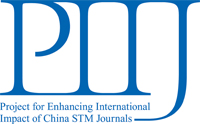Objective
To systematically review the efficacy and safety of arsenic trioxide (ATO) in treatment of acute promyelocytic leukemia (APL).
Methods
The Cochrane Library (Issue 1, 2009), Cochrane Central Register of Controlled Trials (from 1970 to January 2009), MEDLINE (from 1978 to October 2008), EMBASE (from 1950 to March 2009), Chinese Biological Medical Literature Database (from 1978 to December 2008), China National Knowledge Infrastructure (CNKI, from 1994 to December 2008), and China Medical Academic Conference Database (from 1994 to December 2008) were electronically searched. We also searched the Meta-Register of controlled trials, Conference Proceedings of American Society of Hematology (from 1946 to December 2008) and Conference Proceedings of American Society of Clinical Oncology (from 1946 to December 2008) on the internet for grey literature. The related journals in the library of Third Military Medical University were hand-searched. The randomized controlled trials (RCTs) of ATO in treatment of APL were included. We adopted complete remission, overall survival rate, disease free survival rate, time to complete remission, relapse rate, mortality and adverse reactions as outcome indicators. Data were entered and analyzed with the Cochrane review manager software 5.0 (RevMan 5.0).
Results
After merger of the included trials, five eligible RCTs with 328 cases were included. All the RCTs focused on the comparison of all-trans retinoic acid (ATRA) plus ATO regimen with ATRA monotherapy. Meta-analysis showed that the effect indexes for time to complete remission, two-year disease free survival rate, relapse rate, incidence of edema and incidence rate of QT interval prolongation were –1.20 [–1.68, –0.72], 8.64 [1.66,45.00], 0.21 [0.09,0.47], 4.16 [1.46,11.79] and 22.10 [2.75,177.49], respectively. The influences on other outcome indicators such as complete remission and leukocytosis were statistically non-significant.
Conclusion
ATO can prolong disease free survival and reduce the time to complete remission and relapse rate of newly diagnosed APL patients, and increase the incidence of edema and prolongation of corrected QT interval during the treatment. Due to limitation of the included trials, this conclusion needs to be validated by further studies.
 Table of Content
Table of Content














